#Digital Classroom Solution
Text
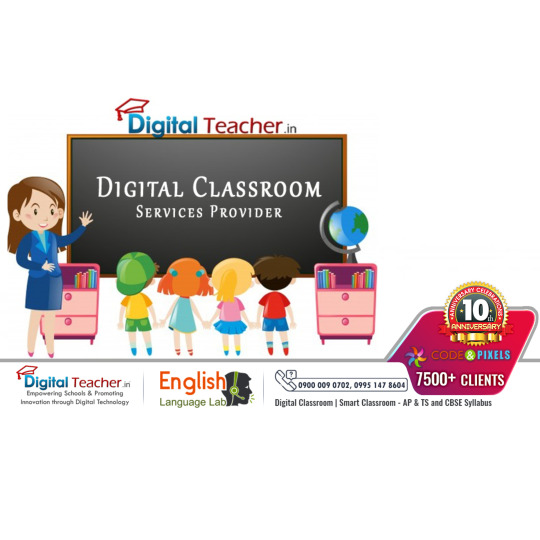
Find digital classroom services provider in Hyderabad. When it comes to digital classroom services for students in Hyderabad and all over India; Digital teacher provide latest apps and software for quick learning. Take advantage of e-Learning and Digital interactive classrooms.
#digital teacher#digital classroom#code and pixels#smart classroom#digital teaching#multimedia based digital solutions#digital education#smart classroom solution#digital classroom solution#self learning material#smart class#digi classroom#smartclassroom#digitalclassroom#digitalteacher#digital content#cbse board syllabus#english language lab#language lab#digital class#digi class
4 notes
·
View notes
Text
Smart Interactive White Board by TopClass | NAVNEET TOPTECH
Upgrade learning with a smart interactive whiteboard & TopClass solution. Engage students with animated teaching, question paper generator, and many more! To know more visit -
#edtech#Digital Classroom#Digital Classroom Solution#Topclass#digital board for teaching#interactive smart white board
0 notes
Text
Learn: How Smartphone Apps Are Changing the Game!
Are you looking for CBSE Syllabus, Then Subscribe to Digital Teacher Canvas Online learning classes for just 1949 rupees only.
#smart classroom#digital classroom#digi class#online learning app#elearning#study online#learning application#online classroom#digital learning#learning app#online learning platform#online education#digital education#online classes#digital class software#digital class solution#online learning#software#technology
3 notes
·
View notes
Text
youtube
Interactive Flat Panel and digital Signage Supplier, Digital Signage Products & Solutions.
▶ShenZhen Cintoe Intelligent Technology Co.,Ltd
▶Email: [email protected]
▶Whatsapp: https://wa.me/008618578623258


#Digital Signage#digital signage software#digital signage displays#digital board for teaching#digital signage and displays#totem touch screen#Digital Signage and Kiosk#Visual Solutions#commercial display#Education Digital Signage#Digital Signage Display System#Digital Signage Products and Solutions#Digital Signage Customized#Intelligent Digital Signage Solutions#Innovative Digital Signage System#digital signage solutions#digital signage companies#smart baord for teaching#inertactive flat panel for meeting#Touch sreen for Classroom
2 notes
·
View notes
Text
CBSE Schools Digital Teacher
Central Board Of Secondary Education, commonly known as CBSE is constituted in the year of 1952. However, in the year of 1962 the board extended its wings, which not only have PAN India presence, but also spread across various continents.
https://www.digitalteacher.in/blog/cbse-schools-digital-teacher/
#smart classroom#digital classroom#digi class#online learning app#elearning#study online#learning application#online classroom#digital learning#learning app#online learning platform#online education#digital education#online classes#digital class software#digital class solution#online learning#software#technology#education#education technology#smart class#digital teacher#smart class solution#smart classroom software#elearning software#digital teacher#digital teacher canvas
2 notes
·
View notes
Photo

Digital teacher learning app for children is specially developed for SSC and CBSE board syllabus students in Hyderabad, Telangana & AP and all over INDIA. Using this digital home tutor app your child can understand and learn all the class subjects quickly with the help of explanatory and animated graphics.
#digital teacher#code and pixels#digital teacher app#learning app#digital teacher learning app#digital home tutor app#cbse board syllabus#tuition teacher#digital solution#digital classroom#self learning tool#multimedia solution
3 notes
·
View notes
Text
#Engineering Mathematics Tuition#Online Tuition Institute#Virtual Learning Classes#E-Learning Platform#Online Tutoring Services#Remote Learning Programs#Digital Education Hub#Internet-based Tutoring#Distance Learning Institute#Web-based Teaching#Online Study Center#Virtual Classroom Solutions#Remote Education Services#Internet Education Academy#Online Tutoring Center#Web-based Educational Institution#E-Learning Academy#Online Course Provider#Distance Education Hub#Virtual Tutoring Institute#Web-based Learning Programs#Online Btech tuition#Engineering tuition online#Btech tutoring services#Virtual Btech classes#Online engineering coaching#Btech distance learning#Remote Btech tutoring#Virtual Btech tuition#Online engineering tutors
0 notes
Text
#Floor Standing Touch Screen Kiosk#Digital Signage Solutions#Digital Display Standee#Aluminum#Floor Standing Digital Signage#Digital Advertising Standee#OLED Led Display Standee#Double side#digital standee#Digital Signage Display#Digital Standee For Retail Stores android led standee#Interactive White Digital Board#Interactive Classroom Boards#PenTouch Interactive Flat Panel#Smart Board Interactive Flat Panel#Interactive Smart Board Finger Touch#Android Touch Screen Kiosk#Visitor Management Kiosk Systems#Touch Screen Information Kiosk#Smart Touch Screen Display Kiosk#Touch Panel Kiosk#Advertising Kiosk for Indoor
0 notes
Text
BEST DIGITAL CLASSROOM | DIGITAL BOARD - GLOBUS INFOCOM
In the ever-evolving landscape of education technology, Globus Infocom stands as a beacon of innovation, reshaping traditional classrooms into dynamic and interactive spaces. Renowned for its commitment to excellence, Globus Infocom has become synonymous with the best digital classroom and digital board solutions. This article explores how Globus Infocom is pioneering the transformation of education through cutting-edge technology.
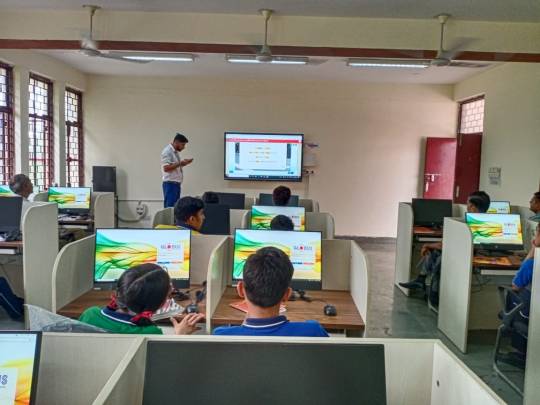
The Evolution of Education Technology:
Traditional classrooms, with their chalkboards and textbooks, are evolving into vibrant hubs of digital learning. Globus Infocom has played a pivotal role in this transformation, introducing state-of-the-art digital classroom and digital board solutions that go beyond mere upgrades; they represent a fundamental shift in the way we approach education.
Interactive Displays: At the core of Globus Infocom's digital classrooms is the revolutionary interactive display technology. These are not just screens; they are interactive canvases that empower educators to create dynamic, engaging lessons. The touch-sensitive displays allow teachers to annotate, draw, and interact with content in real-time, turning the learning process into a collaborative and immersive experience.
Audio-Visual Excellence: Recognizing the importance of sensory engagement, Globus Infocom seamlessly integrates high-definition projectors and advanced audio systems into their digital classrooms. The result is an audio-visual symphony that transforms lessons into captivating experiences, breaking down the barriers of traditional teaching and fostering a deeper connection with the subject matter.
Collaboration Tools: True to the spirit of a digital classroom, Globus Infocom emphasizes collaboration. Cloud-based platforms, interactive apps, and content-sharing features create an ecosystem where teachers and students can collaborate in real-time. This collaborative ethos not only enhances learning but also cultivates teamwork and a sense of community within the classroom.
Smart Devices Integration: Flexibility and mobility are paramount in the digital age of education. Globus Infocom addresses this with the integration of smart devices such as interactive pens and tablets. Educators can move freely around the classroom, controlling the display wirelessly, while students actively participate using tablets to access digital resources, contributing to a more dynamic and engaging learning environment.
Adaptive Learning Solutions: Recognizing the diverse learning styles within a classroom, Globus Infocom incorporates adaptive learning solutions. This intelligent approach tailors educational content to individual student needs, ensuring a personalized learning experience that caters to the unique pace and understanding of each learner.
Impact on Education and Beyond:
The influence of Globus Infocom's digital classroom and digital board solutions extends far beyond the confines of the classroom:
Engagement Redefined: Interactive displays and collaboration tools redefine student engagement, turning passive learning into an active exploration of knowledge.
Efficiency in Teaching: Educators experience streamlined lesson plans, instant access to digital resources, and efficient ways to provide feedback, making the teaching process more dynamic and effective.
Future-Ready Skills: Beyond textbooks, students gain digital literacy skills, preparing them for the demands of a technology-driven future.
Inclusive and Personalized Learning: Adaptive learning ensures that every student, regardless of learning style or pace, receives an education tailored to their individual needs.
Conclusion:
Globus Infocom's digital classroom and digital board solutions mark a paradigm shift in the way we approach education. As we navigate the digital frontier, these innovations pave the way for a future where learning is not confined to textbooks and where classrooms become dynamic, collaborative, and inclusive spaces. Globus Infocom's commitment to excellence is not just transforming classrooms; it is shaping the future of education itself. In embracing the best digital classroom and digital board solutions, we embark on a journey toward a more immersive, engaging, and technologically advanced educational experience.
0 notes
Link
In the fast-paced digital era, technology has significantly transformed various aspects of our lives, including the way we learn and educate. One of the most prominent advancements in the field of education is E-Learning, a revolutionary approach that integrates technology to deliver educational content and learning experiences. This article delves into the world of E-Learning for schools, exploring its benefits, challenges, and how it has shaped the landscape of modern education. You will also be able to download Presentation on E-Learning for Schools: Revolutionizing Education in the Digital Age.
0 notes
Text
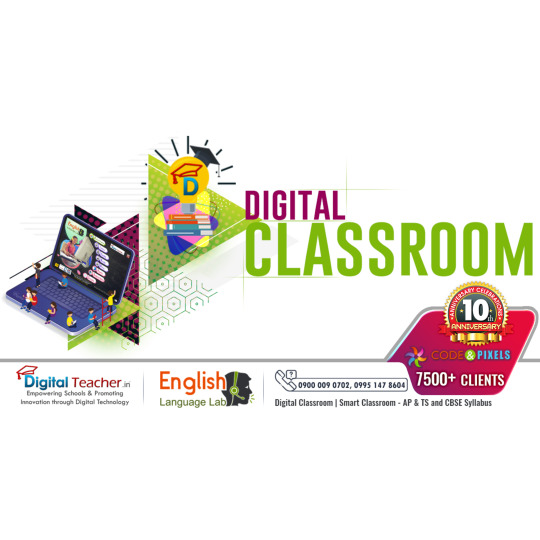
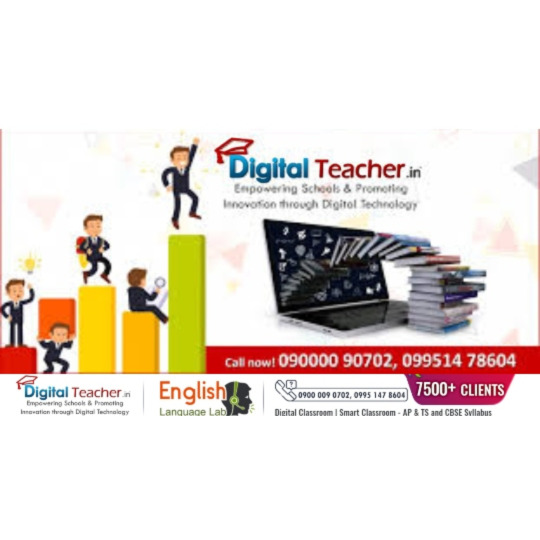

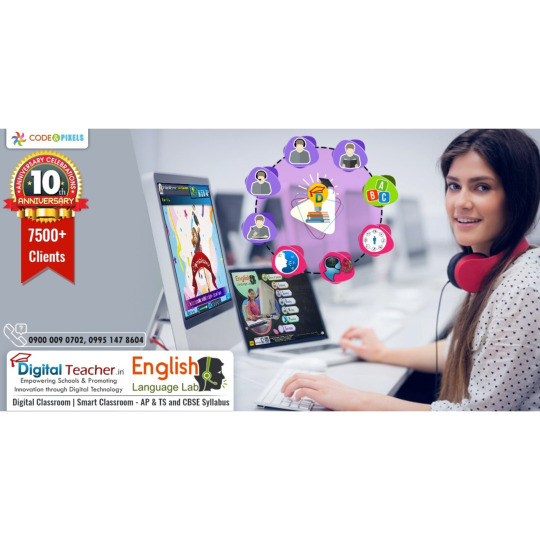
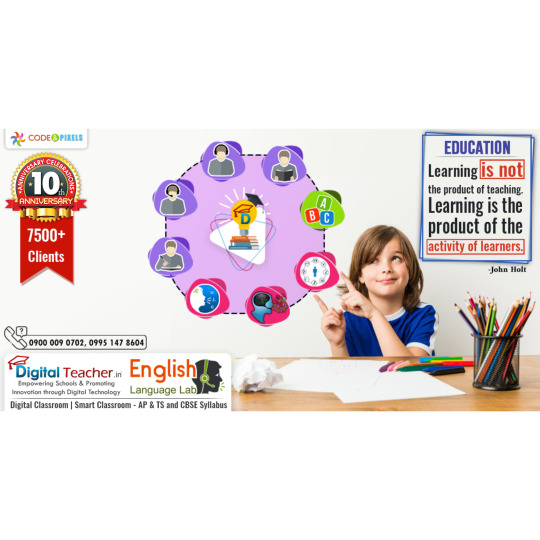




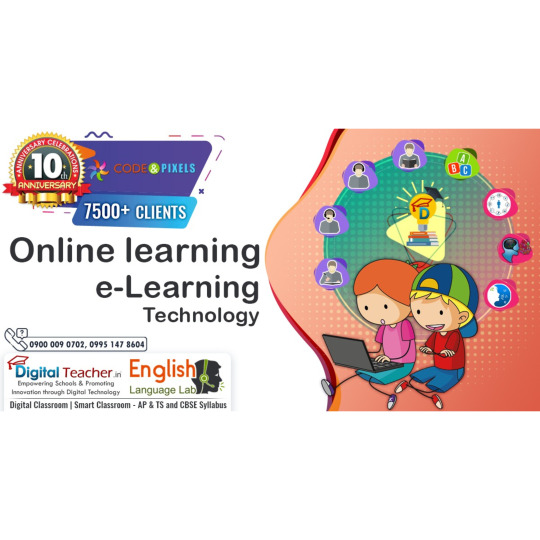

Digital class boards integrated with digital classroom software help to expand the nature of the content with support of illustrations, graphs and animation
#digi class#digital class#digital class board#digital classroom#digital classrooms#making notes#Online resources#Online videos#computer based teaching#digital classroom software#code and pixels#digital content#digital india#digital solutions#digital teacher#elearning solution providers#english lab#english language lab#language lab#simulation based learning#smart classroom#smart classroom solution#smart classrooms#smart class#the learning app#elearning app#digital teacher app#digital teacher learning app#digital teaching tools#elearning solutions
2 notes
·
View notes
Photo
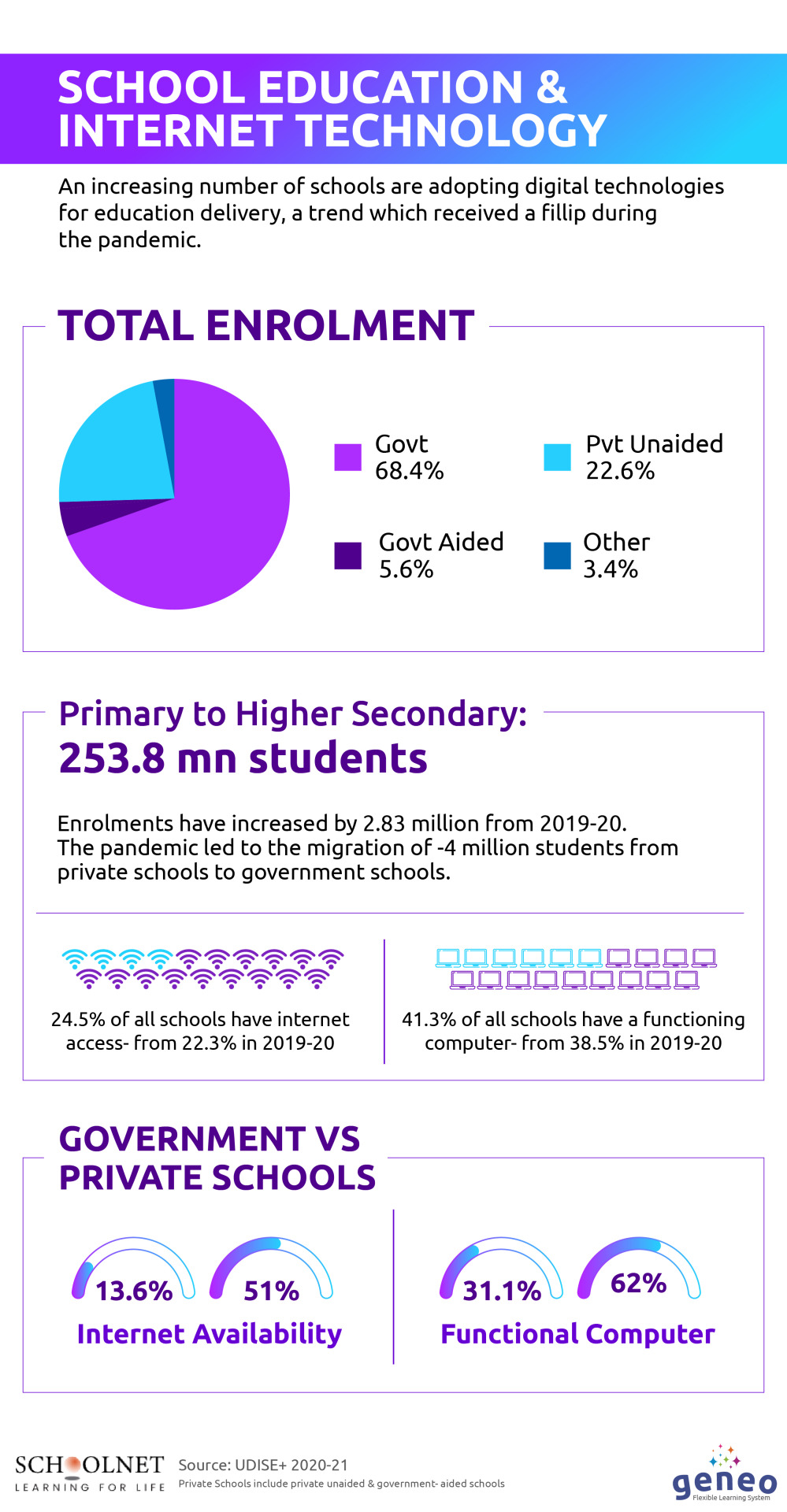
School Education & Internet Technology
New-age schools and colleges are offering Smart Classrooms to their students to stand out from the clutter of educational institutions. These technology-enabled classrooms offer teaching and learning courses by integrating learning technology, such as computers, specialized software, audience response technology, assistive listening devices, networking, and audio/visual capabilities.
0 notes
Text
Digital Classroom Solution: Introduction, Benefits, Features
Explore the world of digital classroom solutions, including an introduction to the concept, its benefits, and essential features. Discover how digital classrooms can revolutionize education and enhance the learning experience for both students and teachers.
Benefits of Digital Classroom Software
Digital classroom software is a revolutionary tool that has transformed the way we approach education. It has numerous benefits that make learning more convenient, engaging, and cost-effective. While the article briefly mentions some of these benefits, there are other advantages worth considering.
Increased Student Engagement
Digital classroom software provides an interactive and engaging learning experience for students. The software includes various features such as videos, animations, and interactive quizzes that make learning fun and interesting. Students can also ask questions and collaborate with their peers, which promotes active participation and enhances their understanding of the material.
Digital classroom software enables teachers to personalize learning experiences for each student. The software can be programmed to adapt to the individual learning needs of each student and provide feedback on their progress. This ensures that students receive the appropriate level of instruction and support, which can improve learning outcomes.
Challenges of Implementing Digital Classroom Software
Digital classroom software provides students with access to a vast range of learning resources that may not be available in a traditional classroom setting. This includes online textbooks, multimedia content, and educational games. The software can also connect students with experts and educators from around the world, which expands their horizons and exposes them to different cultures and perspectives.
While digital classroom software has many benefits, implementing it can be a challenging task. Some of the main challenges include:
Teacher Training: Adequate Technological Infrastructure
Teachers may require training on how to use digital classroom software effectively. This includes understanding how to use the software features, creating engaging content, and managing classroom activities. Without proper training, teachers may struggle to integrate the software into their teaching practices, which can hinder student learning outcomes.
To use digital classroom software, schools require a reliable and fast internet connection, appropriate devices such as laptops or tablets, and appropriate software. If schools do not have the necessary infrastructure, implementing digital classroom software may not be feasible.
Students or Parents:
Some students or parents may resist the use of digital classroom software due to concerns about privacy, data security, or perceived disadvantages compared to traditional classroom settings. Educators must address these concerns and provide assurance that digital classroom software is safe, secure, and beneficial for student learning.
Types of Digital Classroom Software
Digital classroom software refers to a wide range of software applications that enable teachers to create, manage, and deliver digital content to students. Some popular types of digital classroom software include:
Learning Management Systems (LMS):
Learning management systems provide a platform for creating and delivering digital content such as lessons, assignments, and assessments. They also offer tools for communication and collaboration between teachers and students, such as discussion forums and messaging.
Virtual Learning Environments (VLE):
Virtual learning environments provide a digital space for students to learn and interact with their peers and teachers. They typically include features such as video conferencing, online chat, and digital whiteboards.
Best Practices for Using Digital Classroom Software
To effectively use digital classroom software, educators should consider the following best practices:
Before using digital classroom software, educators should set clear objectives for their lessons and identify which software features are most appropriate to achieve these objectives.
Educators should plan their lessons in advance and ensure that all necessary resources are available on the digital classroom software. This includes multimedia content, quizzes, and assignments.
Digital classroom software provides opportunities for students to actively participate in their learning. Educators should encourage student engagement by incorporating interactive elements such as quizzes, polls
In order for digital classroom software to be effective, it is important for teachers to understand how to use it properly. One of the key best practices is to ensure that the software is integrated into teaching practices in a way that enhances student learning. This means that teachers need to carefully consider which features of the software will be most useful for their particular classroom and curriculum.
For example, some teachers may find that recording lectures and making them available for students to review at their own pace is particularly helpful, while others may prefer to use the software for live videoconferencing or collaborative group work. Teachers can also use digital classroom software to track student progress, provide feedback on assignments, and communicate with parents and other educators.
Effectiveness of digital classroom software:
While digital classroom software has become increasingly popular in recent years, there is still relatively little research on its effectiveness in improving student outcomes. However, some studies have suggested that digital classroom software can have a positive impact on student engagement, motivation, and learning.
For example, a study by the National Center for Education Statistics found that students who used digital textbooks and online resources scored higher on standardized tests than those who used traditional print materials. Other studies have shown that digital classroom can help students develop critical thinking skills, enhance creativity, and improve collaboration and communication.
Ethical considerations of using digital classroom software:
While digital classroom software has the potential to revolutionize education, it is important to consider the ethical implications of its use. One of the main concerns is data privacy and security. Digital classroom software collects and stores large amounts of personal data about students, including their academic performance, behavior, and personal information.
There is a risk that this data could be misused or accessed by unauthorized individuals, leading to potential privacy breaches and other security concerns. Additionally, there is a risk that the use of digital classroom software could lead to increased surveillance of students, creating potential ethical concerns around privacy and consent.
Another ethical concern is the potential for bias in automated grading systems. Some digital classroom software uses algorithms to grade student assignments, which could lead to errors and inaccuracies if the algorithms are not properly designed or implemented. There is also a risk that these systems could perpetuate existing biases and inequalities in education, leading to unfair outcomes for certain students.
In conclusion, classroom has the potential to transform education by providing teachers and students with powerful tools for learning and collaboration. However, it is important to consider the benefits and challenges of using this technology, as well as the ethical implications of its use. By understanding these issues and using best practices for integration and optimization, teachers can harness the power of digital classroom software to create engaging and effective learning experiences for their students.
Advantages and Disadvantages of Digital Classrooms:
Advantages
Increased student engagement
Personalized learning experiences
Access to a wider range of resources
Convenience and cost savings
Flexibility in scheduling and delivery
Enhanced collaboration and communication
Real-time feedback and assessment
Improved teacher-student communication
Disadvantages
Dependence on technology
Technical difficulties
Internet connectivity issues
Lack of face-to-face interaction
Potential for distractions
Resistance from students or parents to change
Need for teacher training and support
Potential for unethical or biased automated grading
Here, is the list of some ( FAQs ) Frequently Asked Questions About Digital Classrooms. Few examples are:
What are the benefits of digital classrooms?
Digital classrooms provide many benefits, such as increased accessibility to educational resources, greater student engagement, and personalized learning experiences.
What are the elements of a digital classroom?
The elements of a digital classroom can include hardware and software tools such as computers, tablets, projectors, digital whiteboards, learning management systems, and online collaboration tools.
What is digital classroom technology?
Digital classroom technology refers to the hardware and software tools used in a digital classroom to facilitate teaching and learning, such as computers, tablets, learning management systems, and online collaboration tools.
What is digital tools in classroom?
Digital tools in the classroom refer to software and hardware tools that are used to facilitate teaching and learning, such as digital whiteboards, educational apps, and online collaboration tools.
What is the importance of digital classroom to students?
Digital classrooms provide students with greater access to educational resources, increased engagement, and personalized learning experiences that can enhance their academic performance and better prepare them for future careers.
What is the difference between digital classroom and online classroom?
A digital classroom typically refers to a physical classroom that has been outfitted with digital tools and technology to facilitate teaching and learning, while an online classroom typically refers to a virtual classroom that is entirely online and does not have a physical classroom component.
What is the important role of a teacher in a digital classroom?
Teachers play a critical role in a digital classroom, as they must be able to effectively use digital tools and technology to deliver instructional content and support student learning. They must also be able to adapt to new technologies and teaching methods as they evolve.
What are the different types of digital learning?
The different types of digital learning can include blended learning, which combines traditional classroom learning with digital learning, online learning, which is entirely online and does not have a physical classroom component, and adaptive learning, which uses technology to personalize the learning experience based on the individual needs of each student.
How important is digital learning?
Digital learning is becoming increasingly important in today’s digital age, as it provides students with greater access to educational resources, personalized learning experiences, and career opportunities that require digital skills. It can also help to improve student engagement and academic performance.
#DigiClass #SmartClassSolution #SmartClassroom #DigitalClassroom #SmartClass #EducationTechnology #DigitalTeacher #Physics #CodeandPixels
#digital teacher#digital classroom#digi class#online learning application#elearning#digital learning#learning app#online learning app#online learning platform#online education#digital education#online classes#digital class software#digital class#digital class solution#education#education technology#digital classrooms#smart class#smart classes#smart classroom software
2 notes
·
View notes
Text
youtube
Digital Signage Kiosk, Smart Touch Screen Kiosk, Floor Stand Digital Kiosk.
▶ShenZhen Cintoe Intelligent Technology Co.,Ltd
▶Email: [email protected]
▶Whatsapp: https://wa.me/008618578623258


#Digital Signage#digital signage software#digital signage displays#digital board for teaching#digital signage and displays#totem touch screen#Digital Signage and Kiosk#Visual Solutions#commercial display#Education Digital Signage#Digital Signage Display System#Digital Signage Products and Solutions#Digital Signage Customized#Intelligent Digital Signage Solutions#Innovative Digital Signage System#digital signage solutions#digital signage companies#smart baord for teaching#inertactive flat panel for meeting#Touch sreen for Classroom#Youtube
0 notes
Text
Smart School Education
A smart classroom is a modernized method of education in the Indian education scenario which provides quality education to students by helping them in better concept formation, concept elaboration, improvement in reading skills and academic achievement.
#smart classroom#digital classroom#digi class#online learning app#elearning#study online#learning application#online classroom#digital learning#learning app#online learning platform#online education#digital education#online classes#digital class software#digital class solution#online learning#software#technology#education#education technology#smart class#digital teacher#smart class solution#smart classroom software#elearning software#digital teacher#digital teacher canvas#digital class
2 notes
·
View notes
Text

A conversation about demon tails (Hermie and Taylor bonding)
(Dialogue and image description below)
Left to Right
Panel 1:
Hermie (thought): Great set-up but these typos...
Surroundings: Closet sign, Making edits to fic
Panel 2:
Hermie (thought): Also the doctor is--
Taylor: "Hey Hermie!"
Surroundings: Door slam sound effect
Panel 3:
Hermie: "Hello nephew, crime associate, and best friend. What have you come here for?"
Panel 4:
Taylor (thought): Hey I'm not that short!
Taylor: "No one's around so show me your tail, Herm!"
Hermie (making a dramatic, appalled face off-screen): "Puzzling choice of words..."
Panel 5:
Taylor: "Different shapes...yours looks like Dad's!"
Hermie: "They (both tails) look like Jodie's. Still need to kill--"
Taylor: "Or you could change the shape, dude....Uncle? We could match or make a new shape?"
Surroundings: Nicky's (label for the doodle of Nicky's tail)
Panel 6:
Surroundings: Three new variations (panel header)
Taylor: "Kawaii (cute)!" (to the flower shape)
Taylor: "Cool like my sword cane" (to knife shape)
Taylor: "Mysterious?" (to the mask)
Hermie: "Perfect!"
Side note: The mask is purposefully drawn with the tear on the 'happy' side of the mask unlike the traditional theater masks with tears on the 'sad' side.
----
Copy of image description:
A digital sketch comic with six panels read from left to right and top to bottom. It features the friend and relative duo Hermie and Taylor from Dungeons and Daddies. Hermie is sitting with one leg crossed in the theater classroom. They are looking at their phone and editing Normal's fanfic chapter.
Taylor busts into the room very loudly and interrupts Hermie's thoughts. Hermie greets him and the dialogue box seems to be on top of a very low to the floor Taylor. The next panel shows Taylor pushing the dialogue box into the air with all his strength. He asks to see his best friend's tail. The two compare their no longer hidden demon traits.
The tail tips are different and Hermie's looks more like his half brother's tail than his nephew. The fact that it looks like Jodie's tail makes Hermie angry and she brings up wanting to kill him still. Taylor offers a less violent solution which is using shape shifting to alter the shape to something new.
Three new variations are shown at the bottom which are flower, knife, and theater mask. Hermie likes all the shapes but is most pleased with the mask. Taylor gives compliments to each type excitedly.
#hermie the unworthy#hermie unworthy#herman unworthy#taylor swift dndads#dndads taylor swift#dndads#dndads fanart#dndads s2#sketches#comics#art#abeinginsand art tag
37 notes
·
View notes